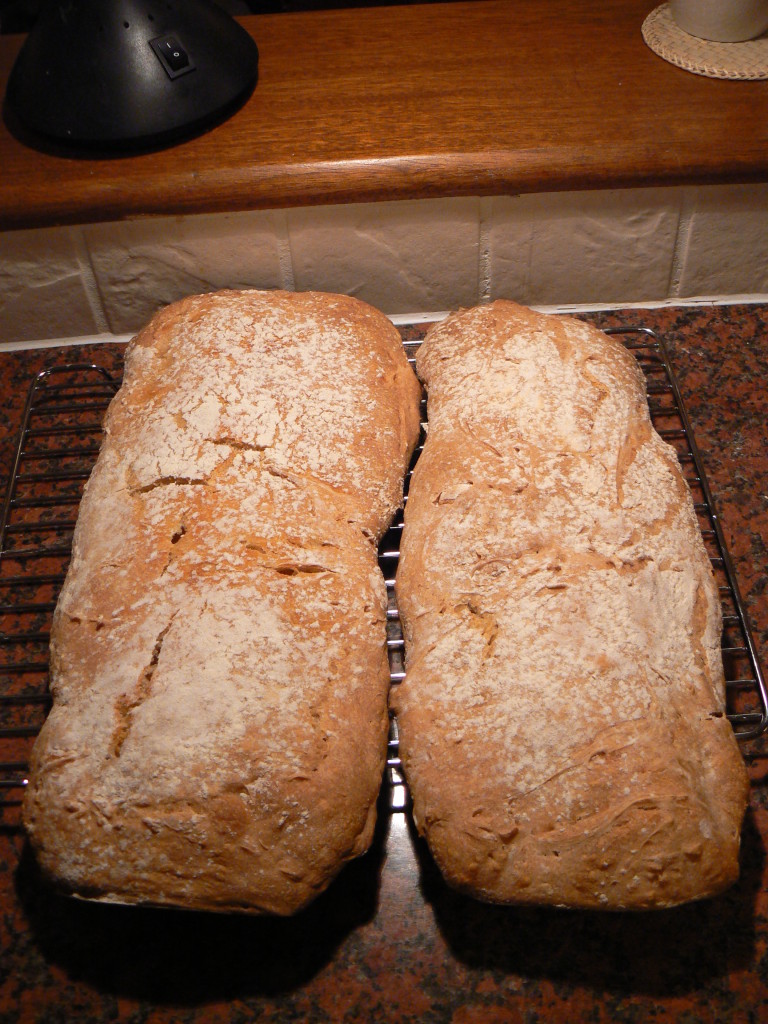Having mastered the French style Pain de Campagne I thought I’d move on to another sour dough – the Italian Ciabatta. I picked this style of bread because it is meant to be very light and airy, and ultimately I’m aiming for Maltese Bread which is also light and airy. Because you’re aiming for light and airy you can’t handle the dough too much. My starting point was the recipe in Treuille and Ferrigno (1998) but I found this resulted in a mixture that was runny rather than the promised wet sticky dough, so I tweaked based on the recipe in Field (1985). I also reduced the quantities so it made roughly the same quantity of bread as my Pain de Campagne recipe. Should I ever want bigger loaves I’ve left the original quantities in parenthesis, e.g. “185 (220) ml” means I now use 185 mls but my original recipe used 220.

Ciabatta
Ingredients
Method
- Mix water and milk
- Sprinkle the yeast into the water. Leave for 5 minutes. Stir to dissolve.
- Add starter and oil. Mix well.
- Mix flour and salt into the yeast mixture to form a wet, sticky dough.
- Beat steadily for 5 minutes. The dough will be too soft to knead, but will become springy and begin to pull away from the sides of the bowl. (Actually I've ended up mixing it with my hand; I can't call this kneading because the mixture is too wet, but it achieves a similar effect.)
- Cover, leave to rise until trebled in size and full of air bubbles (1.5 hours)
- DO NOT KNOCK BACK
- Generously floor two baking sheets.
- While still in the bowl, divide the dough in half with a dough scraper.
- Scoop half the mixture onto a baking sheet. [or roll into cylinder then lay on the baking sheet]
- Dust your hands with flour
- Pull and stretch to form a roughly rectangular loaf (roughly from wrist to elbow long and the width of a hand wide)
- Dust the loaf and your hands with flour
- Run your fingers down each side of the loaf to neaten and plumb up the dough.
- Repeat with other half of dough.
- Leave to prove for 1.5 hours. The loaves will spread as well as rise.
- Pre-heat oven to 220º C
- Throw the ice cubes in the floor of the oven then immediately put the loaves in the oven
- Bake at 220º C for until risen, golden and hollow sounding (20-30 minutes).
- Leave to cool on wire rack.
References
Field, C. (1985). The Italian Baker. Harper Collins.
Treuille, E. and Ferrigno, U. (1998). Pain de Campagne: French country-style bread with a sourdough starter. Bread: Baking by hand or bread-machine, p. 85. London: Dorling Kindersley.